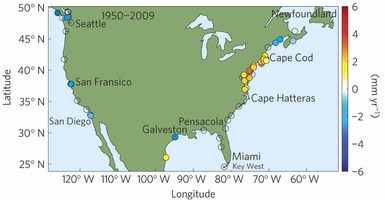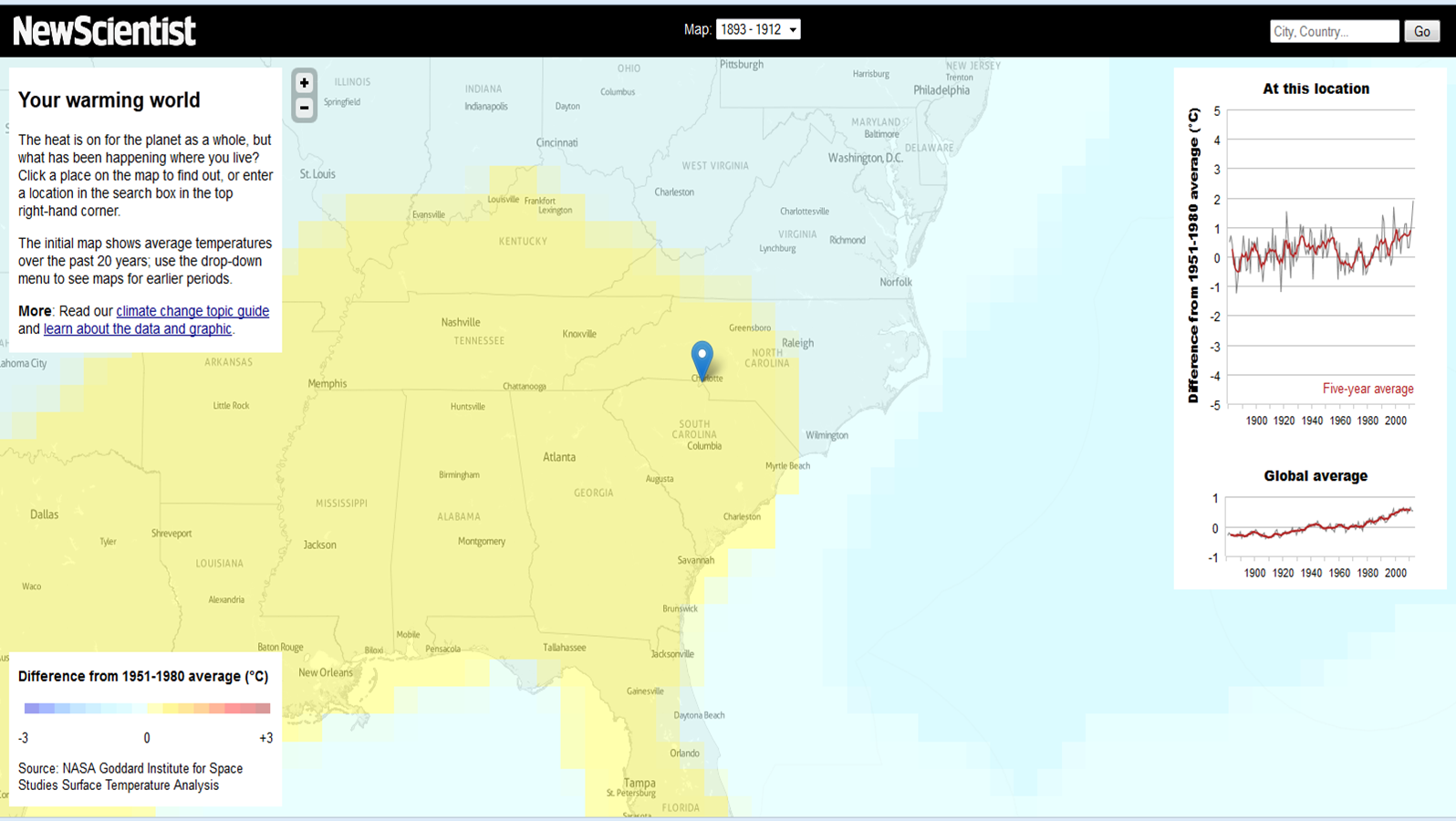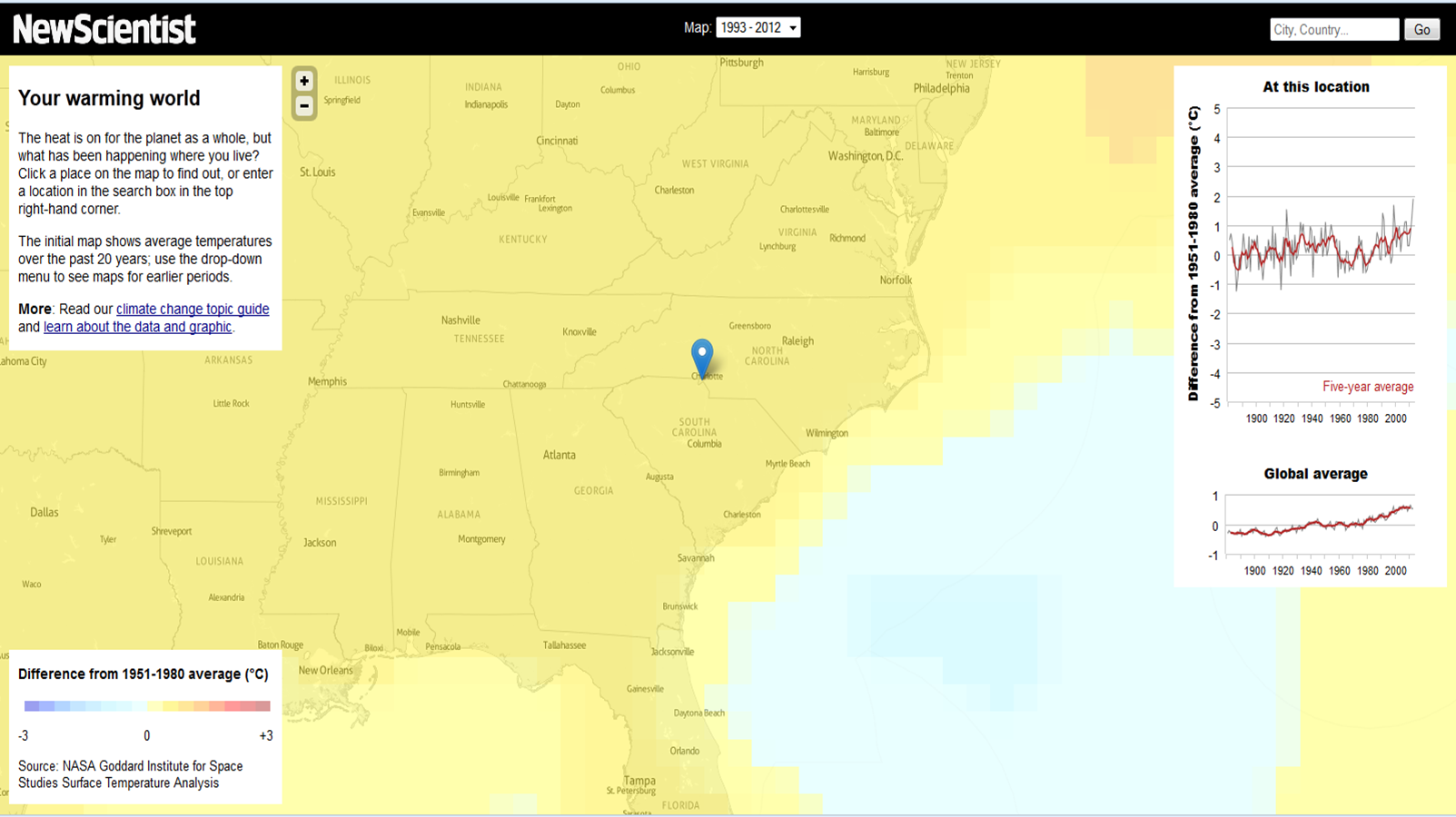Whereas the global warming app I mentioned is based on analysis of data we already have, the future projections of the impacts of global warmings are ridiculously interesting, speculative, and terrifying at the same time. Hurricane Sandy and some of the stories that emerged from the storm surge – including the story of a building in Brooklyn that happened to be building where a storm surge swept through but was undamaged because the the contractors were building with the knowledge that sea level rise will dramatically affect even NYC (building for the future added $550k to the $100 million budget, says the article) and including a very informative interview with a well-known and respected NASA scientist at NOAA’s relatively new Climate Service website – showed that sea level rise is very much on the mind of many. Yet another great webapp published by the New Scientist shows two examples of SLR and how the non-uniform the impacts are expected to be. This is a projection into the future, but many recent studies, like this one based on tide gauge data, agree with non-uniformity in SLR. A great snippet from that Nature Climate Change publication (which was subject to peer-review before publication) is this one  , which shows clearly that the West Coast and East Coast of the USA have already experienced much different responses to SLR. The data seems to be in line with the models, where a model projection is what is shown in the webapp. Another great visualization!
, which shows clearly that the West Coast and East Coast of the USA have already experienced much different responses to SLR. The data seems to be in line with the models, where a model projection is what is shown in the webapp. Another great visualization!
sea level rise
Resources to understand sea level rise
Resources to understand global warming
There is a treasure trove of information and misinformation about global warming on the mighty internet. I try to sift through these as I prepare for effective ways to empower students or at least generate discussion. Here are a couple of new-ish resources that visualize the NASA GIStemp gridded temperature anomaly data set, which are described in great detail on that website but also in the peer-reviewed science literature. The New Scientist (UK popular science magazine) created this webapp to allow anyone to point and click on a location to see how the temperature has changed since about 1890. Here’s a snippet of the Southeast USA anomaly averaged from 1893-1912  and then from 1993-2012
and then from 1993-2012  The global warming trend is presented on the right side, while the temperature trend for the specific location is right above it. What’s really nice is the pop-up window that the app opens when you hover over that location-specific temperature trend. You can see the data that’s plotted! Admittedly, it’s pretty easy to get from NASA GISS as indicated via the links on the webapp itself, but still, it’s a great effort by the New Scientist to make sure any person who wants to can reproduce the analysis. And, most importantly, the app itself is a really accessible way to “see” global warming. Other temperature data sets (HadCRU, NOAA NCDC, and a couple of others) have trends that are very similar to NASA GISS – if I find a link showing this comparison, I will post it.
The global warming trend is presented on the right side, while the temperature trend for the specific location is right above it. What’s really nice is the pop-up window that the app opens when you hover over that location-specific temperature trend. You can see the data that’s plotted! Admittedly, it’s pretty easy to get from NASA GISS as indicated via the links on the webapp itself, but still, it’s a great effort by the New Scientist to make sure any person who wants to can reproduce the analysis. And, most importantly, the app itself is a really accessible way to “see” global warming. Other temperature data sets (HadCRU, NOAA NCDC, and a couple of others) have trends that are very similar to NASA GISS – if I find a link showing this comparison, I will post it.